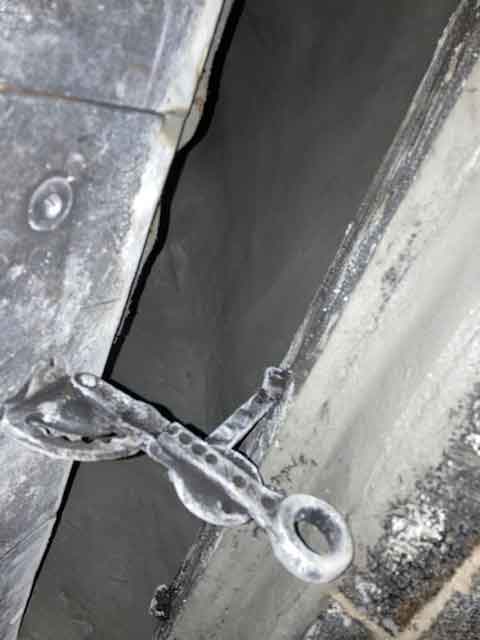Chimney Dampers
The easiest and least expensive way to put a damper on your energy bills? A chimney damper! In Illinois the winters are very cold and the summers are very hot; that means we’re almost always running our air conditioning or heating system at full blast. A great way to keep that expensive conditioned air inside your house where it belongs—and to keep the outside air out—is to have a high-quality damper professionally installed in your drafty chimney. If you don’t have a damper, you probably don’t know that up to 25 percent of your home’s energy may be vanishing through your chimney every year. Broken or damaged dampers can also cause you to see a serious increase in energy bills.
There are two types of chimney dampers—a throat damper and a top-sealing damper—one is located at the “throat” of the chimney, just above the fireplace, while the other is found at the very top of your chimney flue. Some top-sealing dampers serve double duty and can be used to replace a chimney cap.
How Dampers Work
Dampers utilize a metal spring door to keep warm or cool air inside your house and can be easily opened and closed with either a handle or an extended metal chain that you can reach from your fireplace. When you’re ready to enjoy a nice fire, you should open your chimney damper, but otherwise it should be closed. Keeping your damper closed will also add to the life of your chimney since you’ll be keeping your chimney better protected from the elements. A damper can even help prevent animals, birds, insects, bees and airplane noise from entering your house.

Chimney Damper Repairs
We’ve already explained the importance of having a chimney damper. Now we’re going to explain why you need to keep it in good shape. Broken or damaged dampers can make your fireplace and chimney a hazard, especially if an immense amount of soot has been left to build up or if your damper has water damage. This kind of disrepair can cause your damper to get stuck in the open or closed position and can impede the flow of air into and out of the chimney, leading to a higher production of creosote. Creosote is the sticky, highly flammable, soot-like byproduct of combustion; it is what chimney sweeps work so hard to remove during a chimney cleaning. An annual inspection by a certified chimney professional will reassure you that your chimney and fireplace or furnace are running safely and efficiently from top to bottom.
Have questions about how a chimney damper can save you money? Call Aelite Chimney today at (815) 363-1242 or click here to schedule an appointment online.
The installation of a chimney cap will keep out rain, snow, critters and other unwanted debris. Call on Aelite for this important chimney “fix.”
